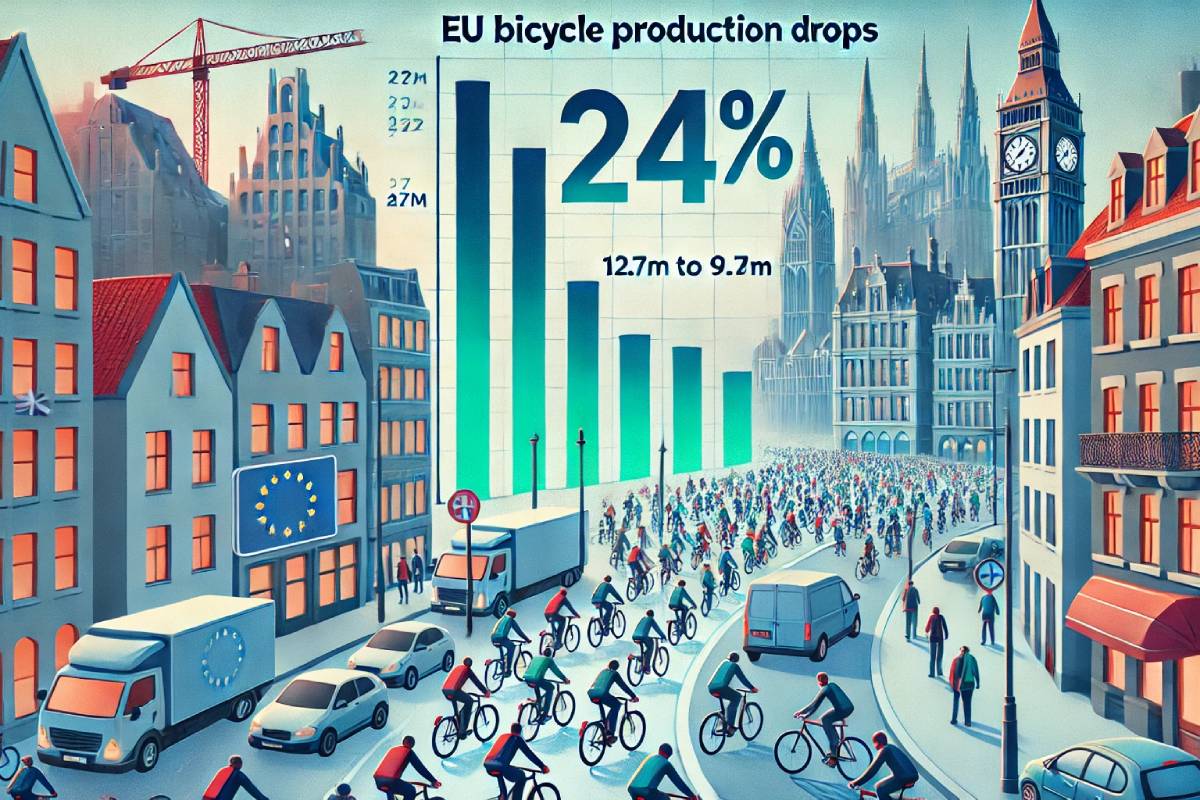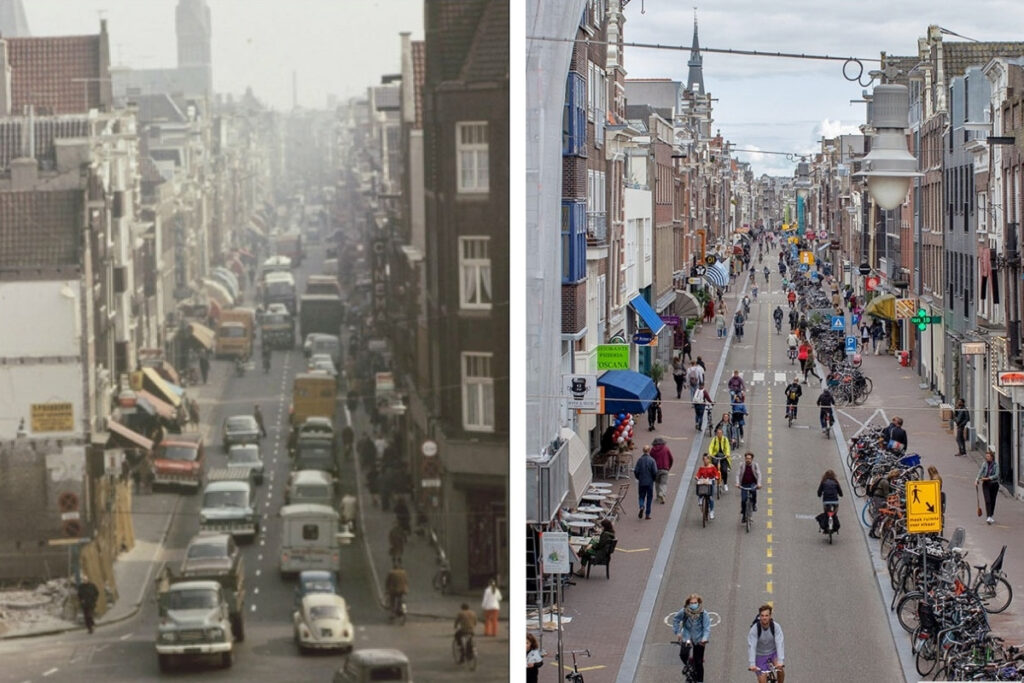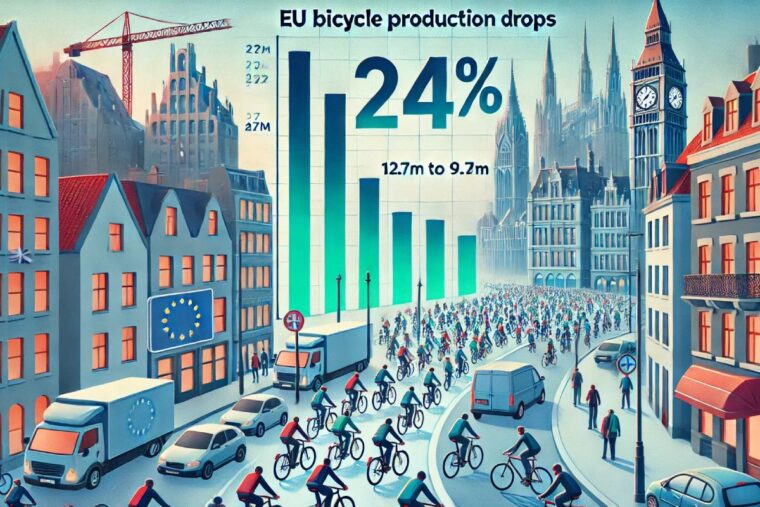
Cycling has long been hailed as the ultimate eco-friendly and health-conscious mode of transportation.
Yet, despite the growing emphasis on sustainability and urban mobility, bicycle production in the European Union has seen a significant drop.
In 2023, EU member states produced 9.7 million bicycles—a sharp 24% decrease from the 12.7 million produced in 2022.
What’s causing this surprising downturn, and does it signal the end of the cycling revolution?

The Numbers Behind the Decline
According to Eurostat’s latest data, bicycle production declined in 14 of the 17 EU countries that reported figures for 2023. Notably, some of the largest producers experienced the steepest declines:
- Romania: A drop of 1 million units, bringing total production down to 1.5 million.
- Italy: A reduction of 0.7 million bicycles, leaving production at 1.2 million.
- Portugal: A decrease of nearly 0.4 million, though it still led the EU with 1.8 million units produced.
- Poland: Produced 0.8 million bicycles, but it also saw a decline.
This downward trend comes at a time when many European cities are actively promoting cycling as a means to reduce urban congestion and carbon emissions. So, why is production faltering?
Possible Causes of the Decline
The decline in bicycle production can be attributed to a variety of economic, social, and market-driven factors:
- Economic Uncertainty The lingering effects of the COVID-19 pandemic, rising inflation, and broader economic instability have led to reduced consumer spending. People may be prioritizing essential goods over discretionary purchases like bicycles.
- Supply Chain Disruptions Global supply chain issues, including shortages of raw materials and components like aluminum and electronic parts for e-bikes, have likely hampered production capabilities.
- Shift to E-Bikes While traditional bicycle production is declining, the demand for e-bikes continues to grow. E-bikes are typically more expensive and complex to manufacture, requiring specialized parts that may not be readily available, contributing to overall lower production numbers.
- Second-Hand Market Growth A thriving second-hand market for bicycles has emerged in recent years. Many people are opting to refurbish or buy used bikes rather than purchase new ones, reducing demand for new models.
- Environmental Regulations Stricter EU environmental regulations for manufacturing processes could be impacting the speed and cost-efficiency of production, especially in countries with older production facilities.

Is the Cycling Revolution Over?
The decline in production might seem like a step backward for the cycling movement, but it’s essential to view this trend in a broader context.
Urban cycling continues to thrive in many European cities, with increased investments in infrastructure and growing popularity of bike-sharing services.
The drop in production could represent a market adjustment rather than a collapse of the cycling revolution.
Some experts argue that shifting consumer habits, such as a preference for shared mobility or e-bikes, reflect an evolution of the cycling culture rather than its demise.
While traditional bicycle production may have decreased, innovations like e-bikes and cycling-friendly urban planning are helping the movement adapt to modern needs.
What Could Reverse the Trend?
For the EU to regain its footing as a leader in bicycle production, several strategies could help:
- Boosting E-Bike Production Manufacturers should pivot toward e-bike production to meet rising demand. Governments can support this by offering subsidies and incentives for e-bike purchases and production.
- Investment in Green Manufacturing Upgrading manufacturing facilities to meet environmental standards while improving efficiency could help lower production costs and increase output.
- Stimulating Local Demand National governments and local authorities could launch campaigns to encourage bike ownership, including tax breaks or subsidies for traditional bicycles.
- Supply Chain Resilience Diversifying supply chains and investing in local production of components could reduce reliance on imports and prevent future disruptions.

A Hopeful Outlook for Urban Cyclists
While the production decline is concerning, it is by no means the end of the cycling revolution.
Urban cycling remains a cornerstone of sustainable transportation, and the challenges facing the industry present opportunities for innovation.
Investments in e-bikes, better infrastructure, and green manufacturing could pave the way for a stronger, more resilient bicycle industry in the EU.
The cycling movement is far from over. It’s evolving. With continued support from governments, industry leaders, and cycling advocates, the future of urban mobility remains bright.
After all, as cities grow denser and the fight against climate change intensifies, bicycles will remain a vital part of the solution.
Sources and Further Reading
- Eurostat: EU Bicycle Production Data (2023)
- The Rise of E-Bikes in Europe
- Cycling Infrastructure Investments in European Cities
- Supply Chain Challenges for Bicycle Manufacturers
The post Bike Sales Are DOWN 24%. Is the Cycling Revolution Dead? appeared first on Discerning Cyclist.
